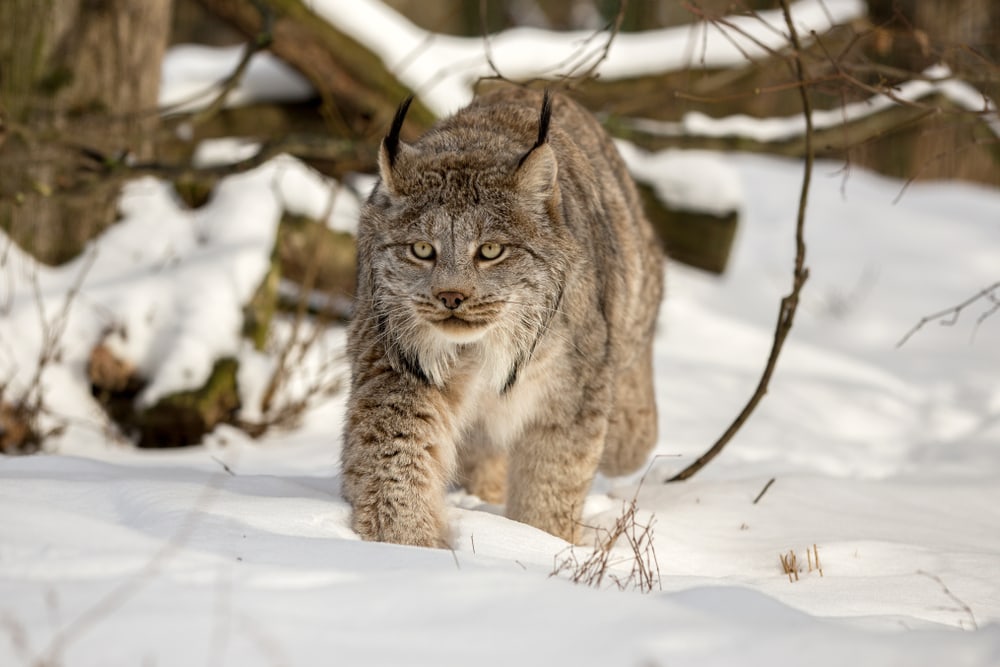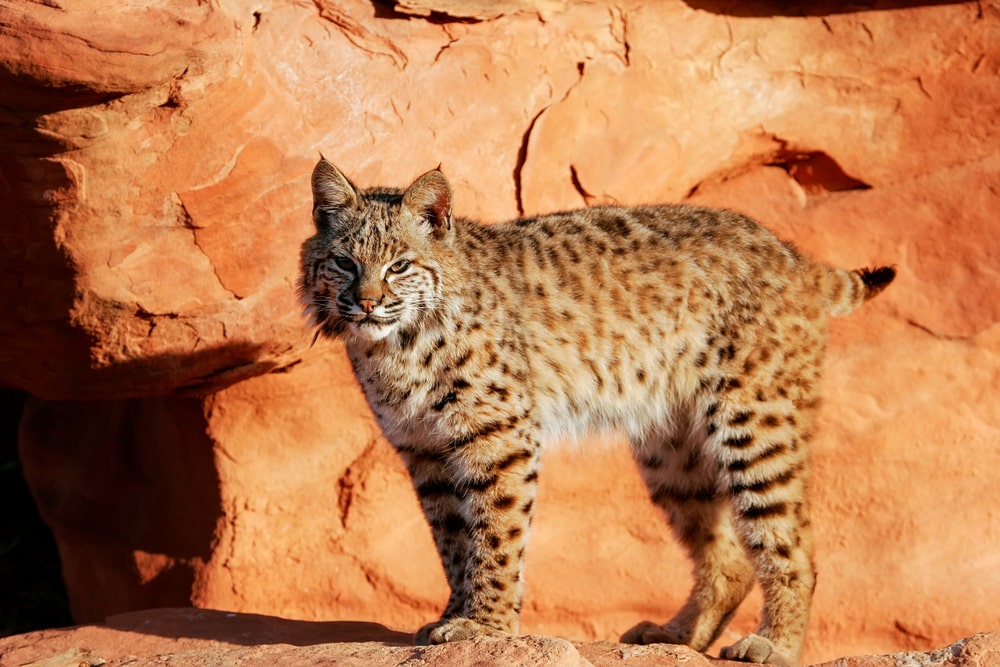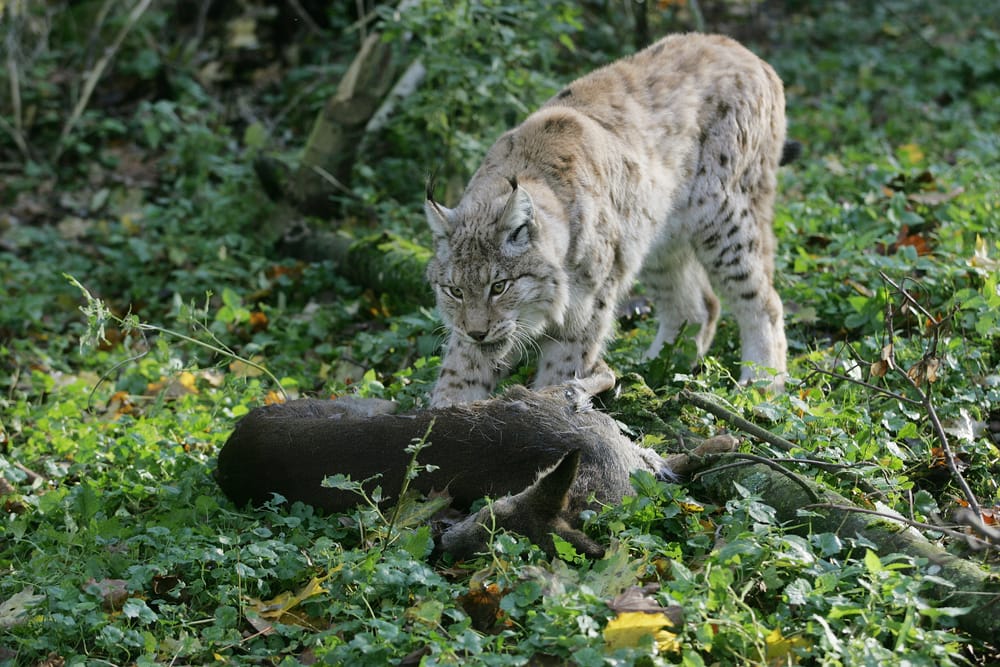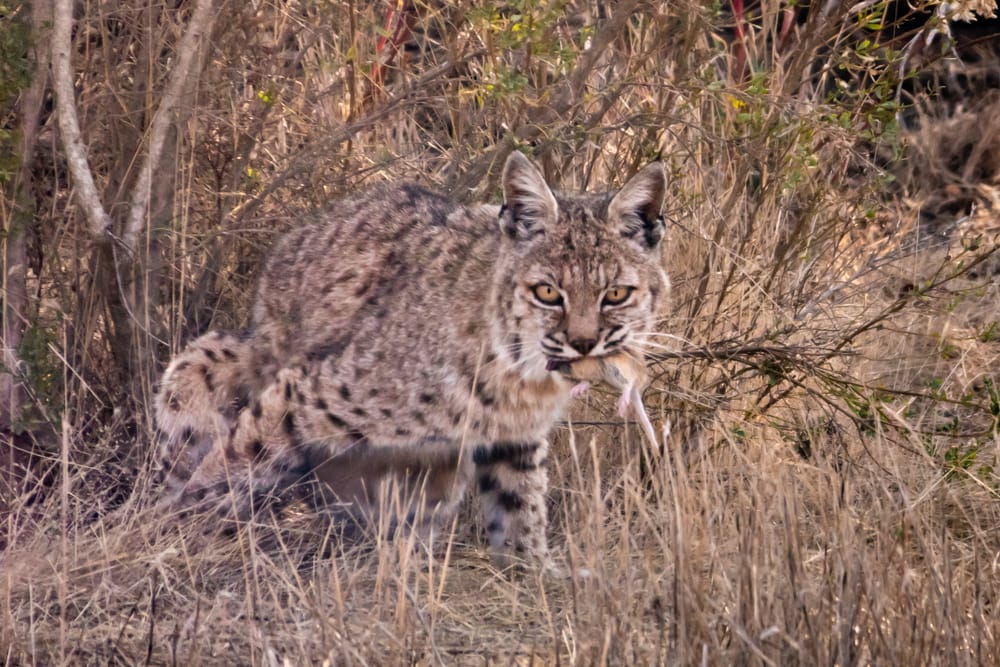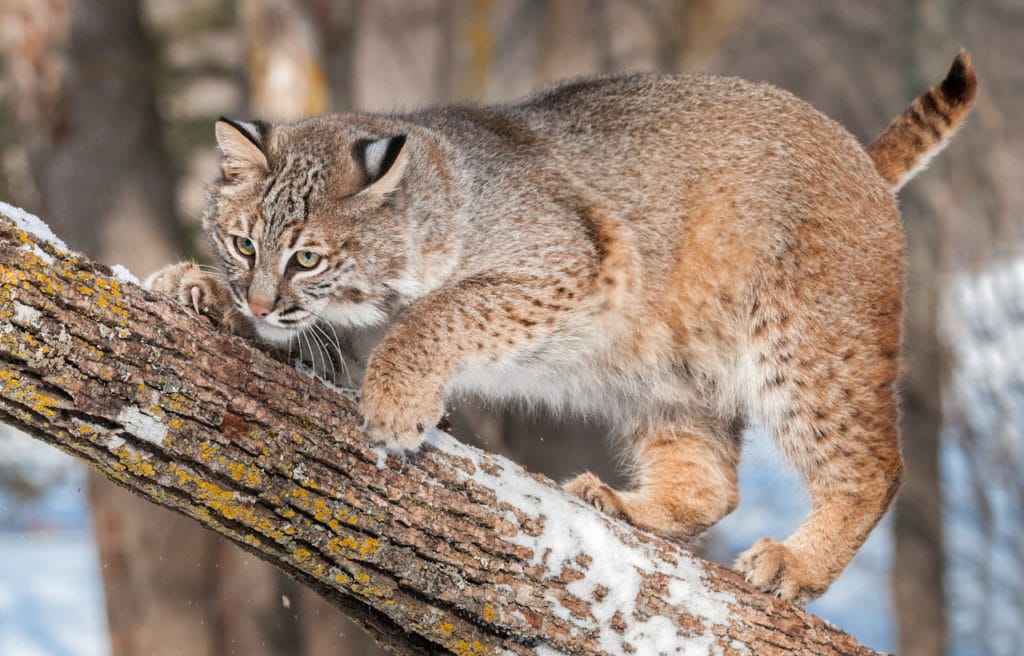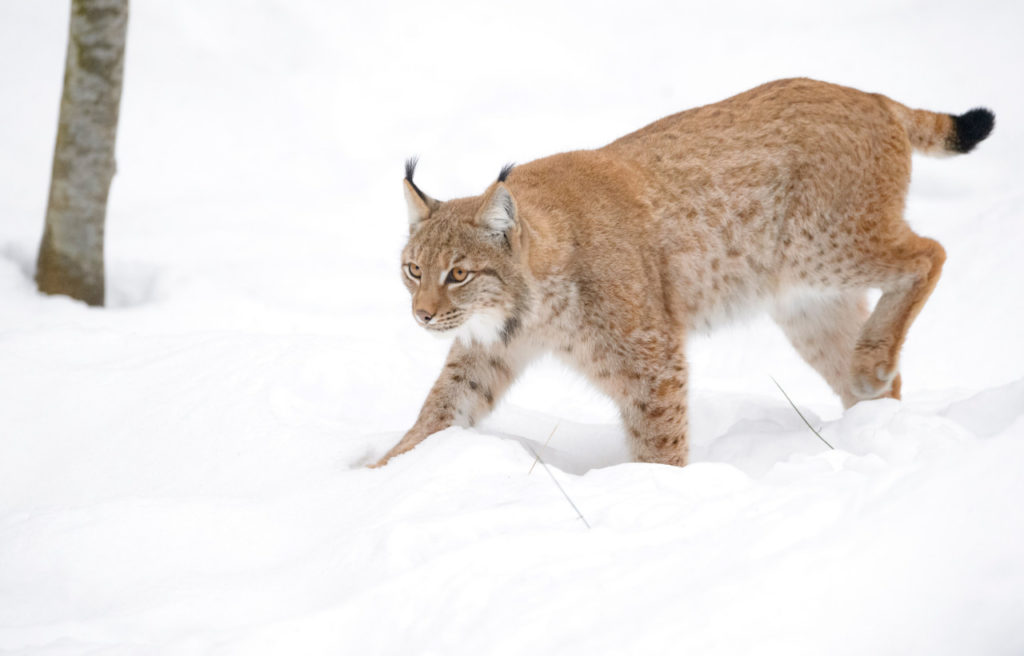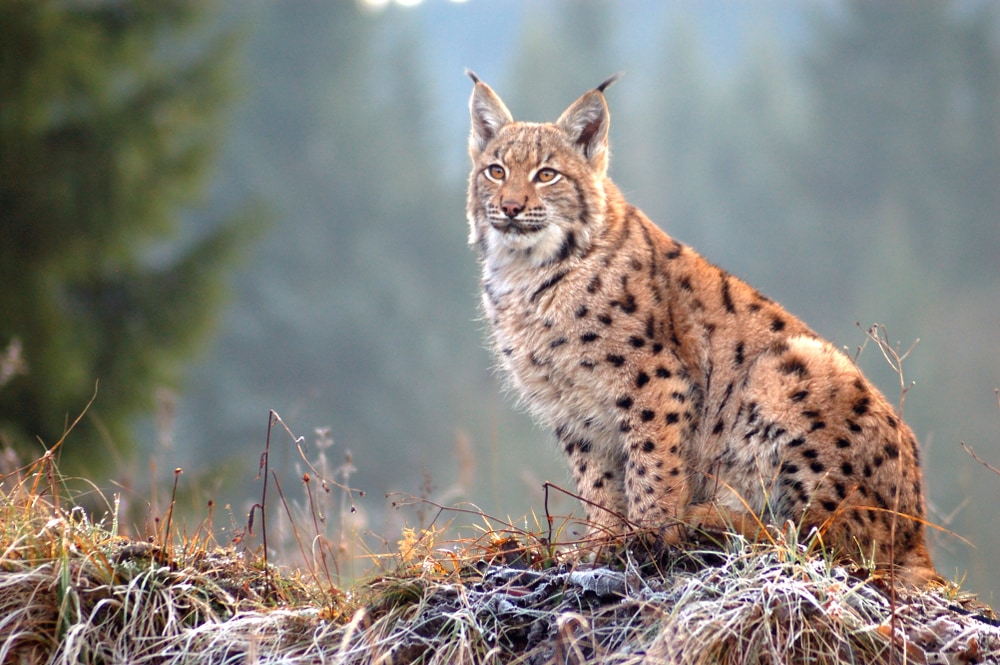
Scientifically, genetically, and taxonomically, lynx and bobcats are two separate species of wild cats. Found in North America, Spain, and Eurasia, these small to medium-sized felines compete with canines, big cats, and bear species for prey.
It might surprise some people to know that bobcat and lynx have a different meaning linguistically than in science. Before we get to the main differences between the species, we need to explain which species we will be discussing and how their names are used in this article.
A Little Terminology Lesson About Bobcat vs Lynx
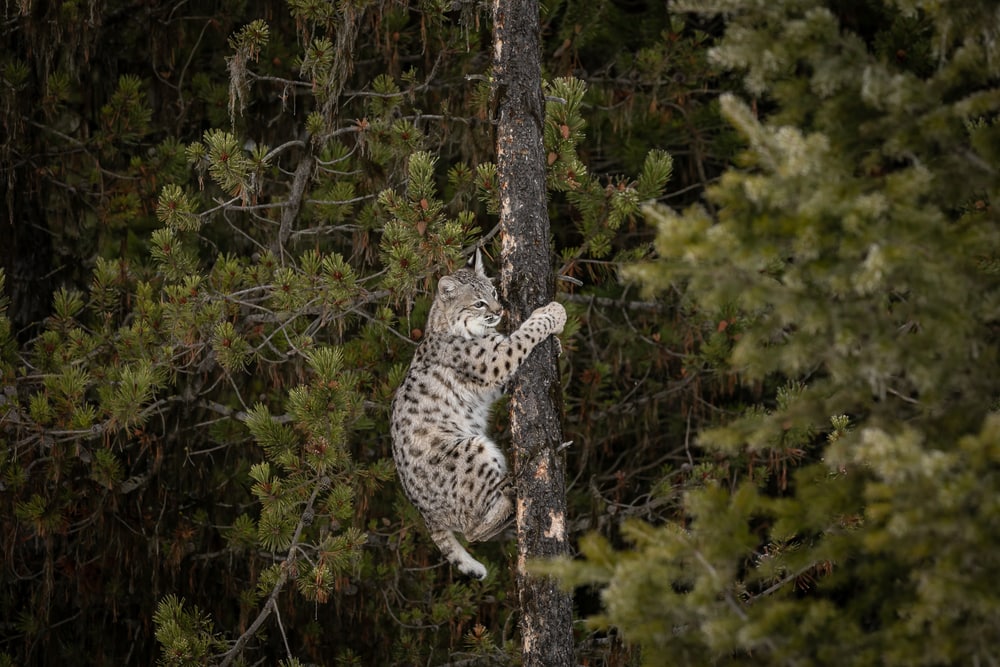
One reason that people usually think bobcats and lynx are the same animals is that they share many characteristics. Both species are medium-sized wild cats that belong to the lynx taxonomic family. Scientifically, the term lynx refers to one genus, containing four species:
- Iberian Lynx,
- Canadian Lynx
- Eurasian Lynx,
- Red Lynx (Bobcat)
To further aid in confusion, people frequently use both the term “lynx” and “bobcat” interchangeably to refer to whichever species is native to their region. The preferred term is usually determined by local dialect, but many times both terms are acceptable.
When it comes to the Canadian Lynx and the Red Lynx (Bobcat), the animals are incredibly similar and are found in the same regions. There are enough differences though, that we can point them out to aid in identifying apart from each other.
For the purpose of this article, the term “bobcat” will refer to the Red Lynx and the term “lynx” will be used to describe its cousin the Canadian Lynx.
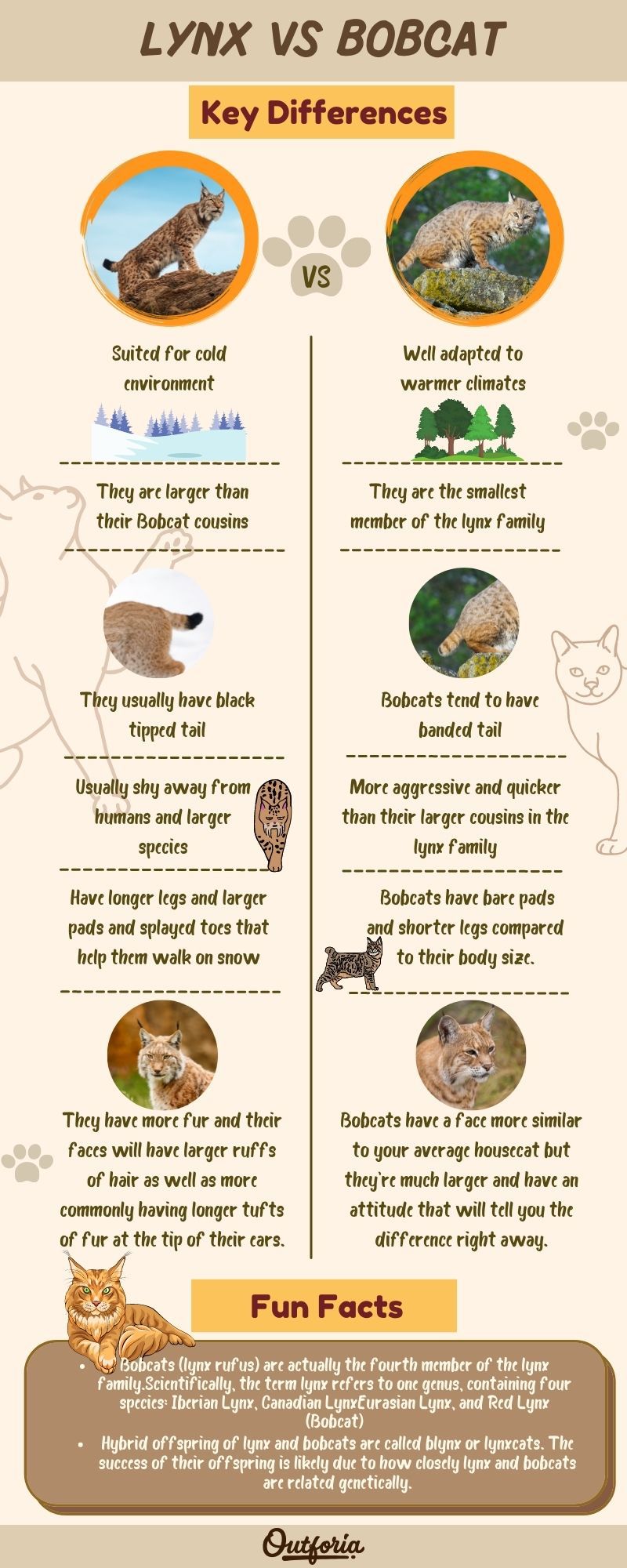
Share This Image On Your Site
<a href="https://outforia.com/lynx-vs-bobcat/"><img style="width:100%;" src="https://outforia.com/wp-content/uploads/2022/02/lynx-vs-bobcat.jpg"></a><br>Lynx vs Bobcat <a href="https://outforia.com">Outforia</a>
Lynx vs Bobcat: The 5 Main Differences Between Them
1. Lynx vs Bobcat: Range and Terrain
Lynx and bobcats have a lot of range overlap in the temperate areas of North America. Both can be found in the Northern United States and Southern Canada. From here though, their ranges spread out in opposite directions.
Bobcats are well-adapted to warmer climates, spreading all across the United States and into Mexico. They can be found in a wide variety of terrains including swamps, forests, steppes, deserts, and mountains.
Lynx are better-suited to cold environments. They similarly inhabit mountainous areas, steppes, and forests, but are also found in the tundra. The range of the lynx extends far into the northern areas of Canada where bobcats will usually never be found.
2. Lynx vs Bobcat: Diet
Since they inhabit very different environments, the primary food source for lynx and bobcats can vary significantly. In both ranges, all types of squirrels, rabbits, hares and small mammals are their main source of prey.
Bobcats will still take those animals when they can, but also have other food sources available to them and supplement their diet with mice and birds more frequently. Snakes and lizard species can end up on a swamp-dwelling bobcat’s menu when the opportunity arises.
Lynx on the other hand can take down larger prey thanks to their larger size. While not their most frequent option, even larger undulates like mule deer can fall prey to lynx. When it comes to the Canadian lynx, between 60-90% of their diet is made up of hares.
3. Lynx vs Bobcat: Physical Traits
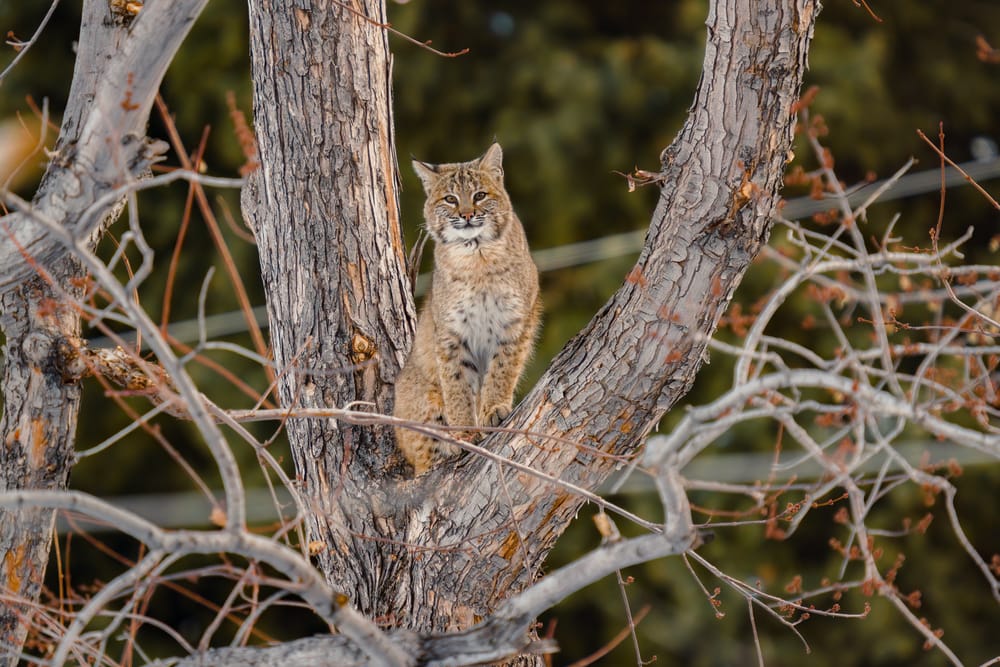
Bobcats are a smaller species than their northern cousins. An average bobcat will weigh somewhere between 11 to 37 lbs (5 to 17 kg), while a Canadian lynx will weigh somewhere between 18 to 64 lbs (8 to 29 kg).
Bobcats are the smallest member of the lynx family, but the Canadian lynx is only a bit larger than bobcats on average. Just judging them based on size can be difficult, since their size ranges have a good amount of overlap. Because of this, other physical characteristics are better at distinguishing the two.
Since bobcats are adapted for warmer climates and more varied terrain than their cousins, they have some different characteristics. Most lynx have fur covering their footpads, with larger pads, long legs, and splayed toes that help them walk on snow. Bobcats have bare pads and shorter legs compared to their body size.
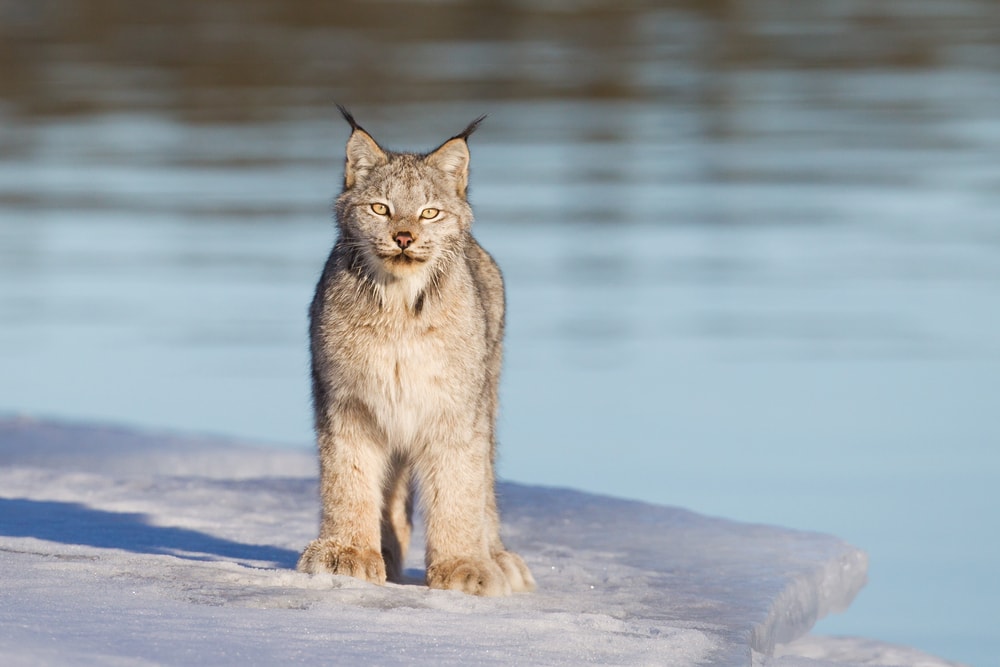
Lynx have more fur than bobcats, presumably to make up for their colder environment. Their faces will have larger ruffs of hair on their cheeks and the top of their head, as well as more commonly having tufts of fur at the tip of their ears.
Bobcats have a face more similar to your average housecat. Don’t let their appearance fool you though, as they’re just as fierce as their larger cousins when cornered.
4. Lynx vs Bobcat: Colors and Patterns
Despite the physiological differences, Canadian lynx and bobcats still look very similar. Looking at their fur colors and patterns isn’t the best way to identify them since they can have very similar coats, but can still give some clues about their normal habitat.
According to the Vermont Fish and Wildlife Department, lynx in that area tend to have bland or grayish coats of fur, while bobcats have more distinct spots and stripes in their reddish-brown fur.
Bobcats usually have a banded tail, while lynx have a black-tipped tail. Lynx will usually have more gray coats to help them blend into snowy environments, while bobcats tend to have darker pelts to blend into forests and rocky environments.
Both animals’ coats can change throughout the year. The changes aren’t drastic, but more of a seasonal shift in tone to allow better camouflage in different weather.
5. Lynx vs Bobcat: Attitudes
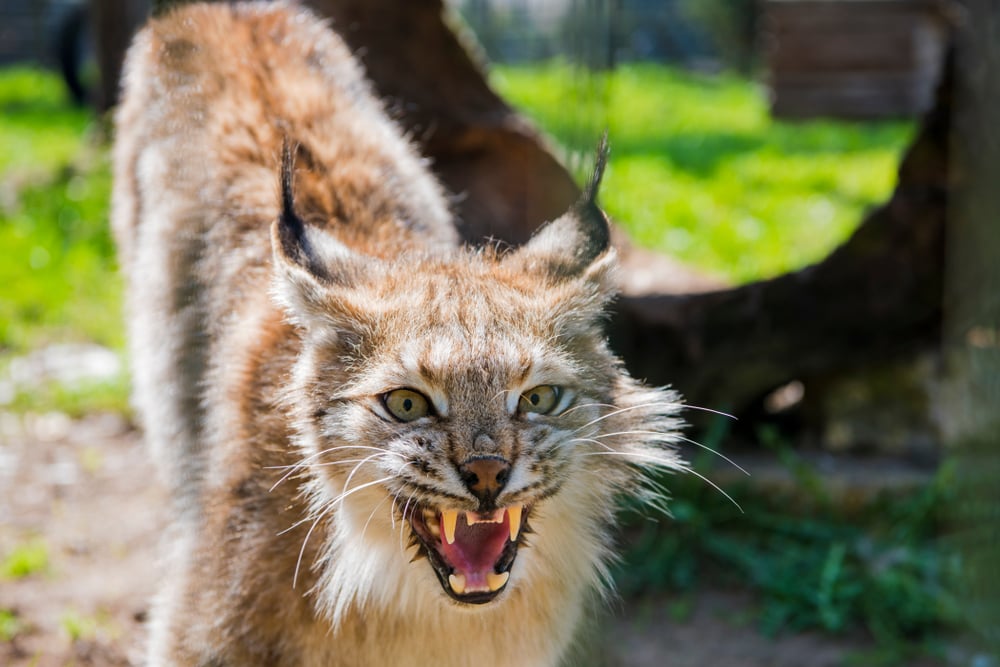
Every species in the lynx family will do its best to avoid humans at nearly all costs. They’re used to avoiding other large predators like mountain lions, bears, and coyote packs, but they have a healthy fear of people.
Bobcats are smaller and they tend to be more aggressive and quicker to attack than their larger cousins.
For the most part, both lynx and bobcats will turn around and run from people to the point that it’s fairly rare to ever see one. When cornered though, you can expect them to fiercely defend themselves.
You may also like: Learn the Differences and Similarities Between Jaguar vs Leopard: With Images, Descricptions, Facts, and More!
What Makes Bobcats and Lynx Similar?
1. Bobcat vs Lynx: Social Patterns and Child Care
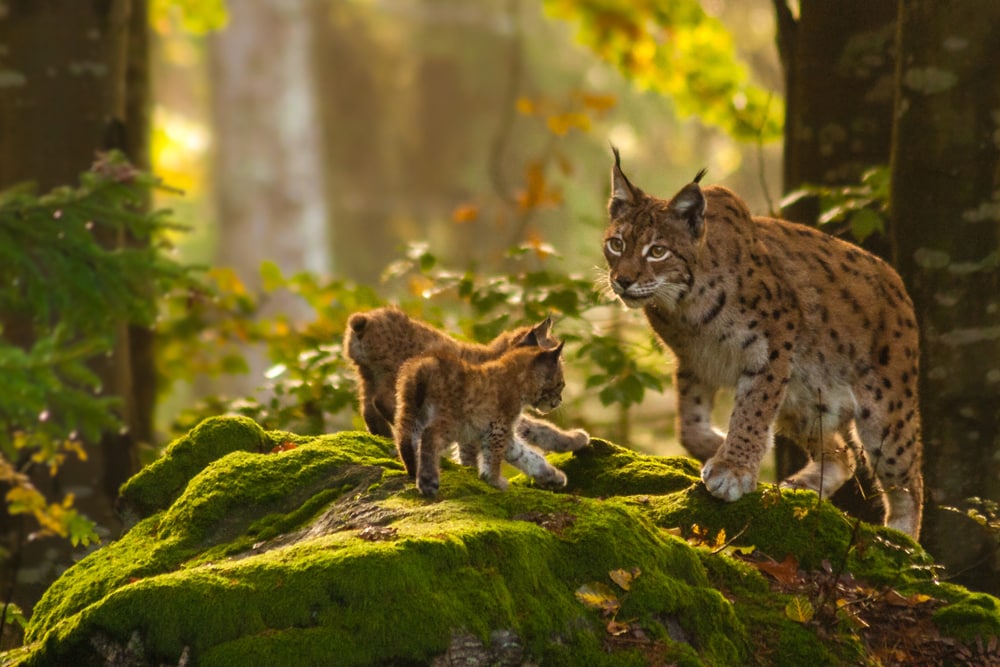
For the most part, all lynx species are solitary creatures. They den, hunt, and sleep on their own, establishing and defending their own territory against incursion. The only times you tend to find lynx together is during their breeding season or a mother lynx with their kittens.
Males and females seek each other out, usually between February and March to breed. They may spend a few days with each other, but once the female is pregnant the male leaves to let her fend for herself.
Lynx give birth to between one and six kittens per litter. The kittens will nurse from the mother for four to five months before weaning themselves into eating meat. By ten months old, a lynx can fend for itself. Despite this, they tend to spend at least the first year of their life in the care of their mother and don’t reach their full adult size until two years of age.
When young lynx leave their mother, they will sometimes travel together with their siblings for a few months. After this time, they go their separate ways and live almost entirely solitary lives.
2. Bobcat vs Lynx: Hunting Strategies
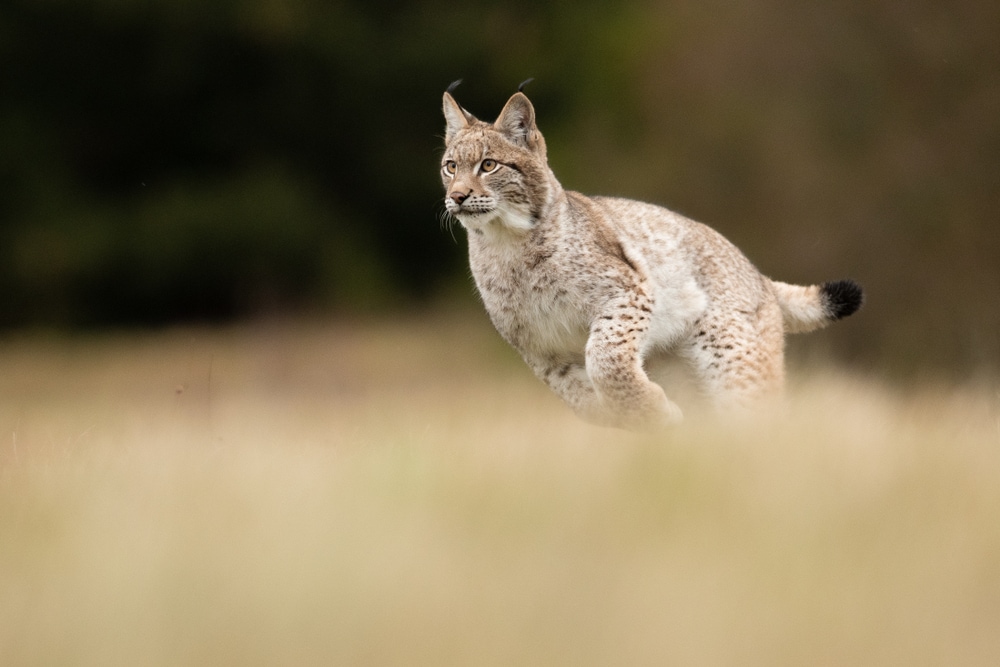
All lynx species could be described as lethargic. They tend to be an ambush or stalk-and-attack hunters, spending most of their time either hiding inside a hollowed-out log or atop a vantage point waiting for prey to come by.
Neither animal has much stamina and tends to not chase prey very far. They prefer to wait motionlessly, pouncing directly onto their prey or closing the distance with a quick burst of speed from their hiding spot.
3. Bobcat vs Lynx: Lifespan
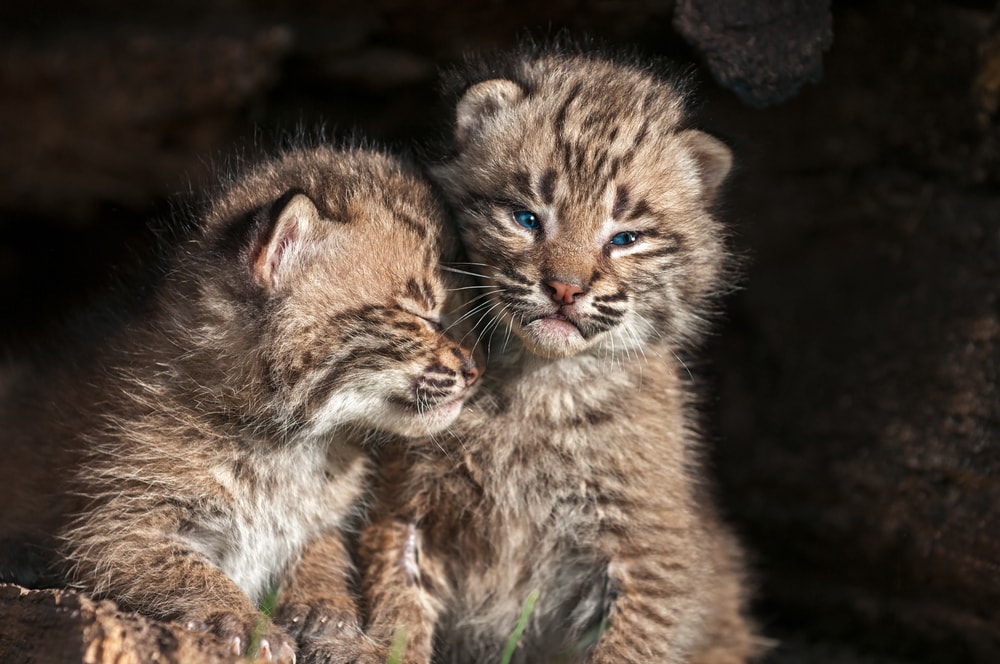
In zoos, bobcats tend to have a life expectancy of around 18 years, while lynx have a slightly shorter life span of around 14 years. In the wild, both have similar life spans, typically lasting between five and ten years when they are able to survive their juvenile years. The most impactful factor in determining their life span is food availability.
4. Bobcat vs Lynx: Winter Activity
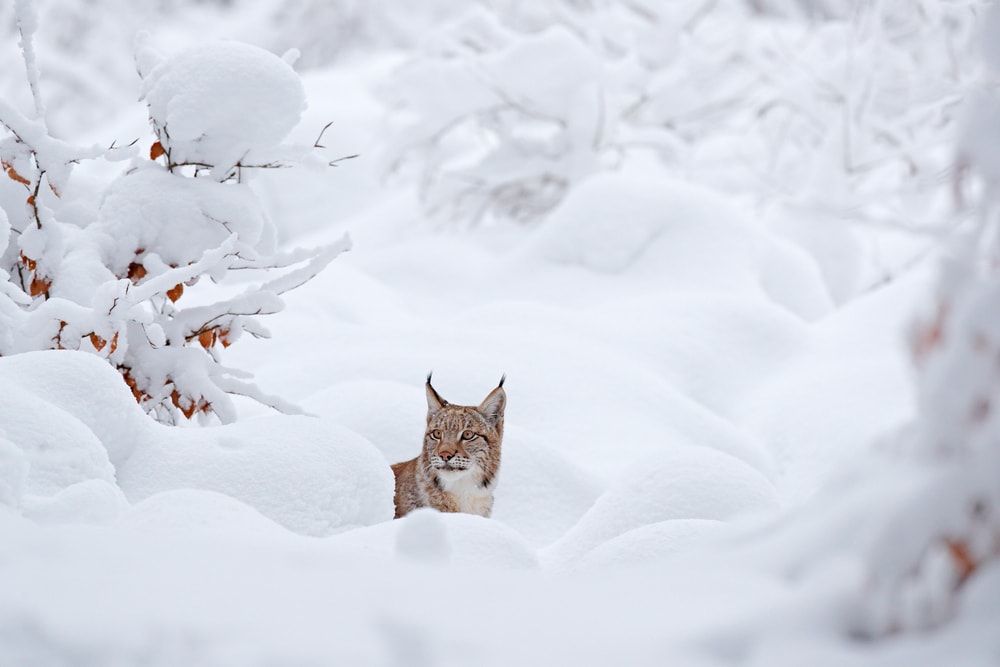
It would be a stretch to say either animal is very active during any part of the year, but they’re especially slowed down in winter months. Bobcats and lynx tend to find or make dens out of rocky outcrops, fallen timber piles, or hollowed-out areas for them to nap throughout the day.
During winter, both animals tend to retreat to better-protected dens to stay out of the elements. Neither one of them really hibernates, they simply continue their wait-and-see hunting approach from a position of better comfort.
5. Bobcat vs Lynx: Appearance
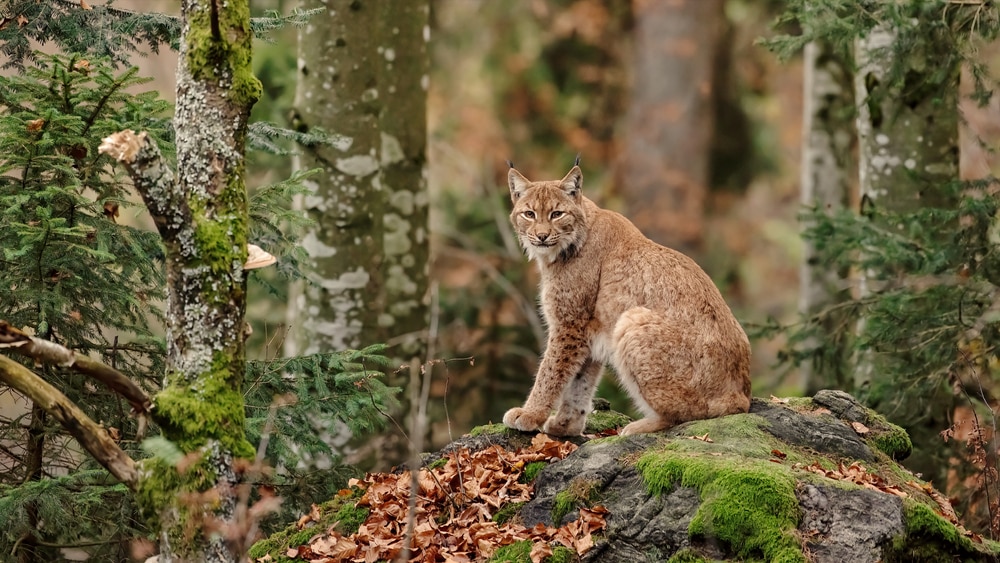
It can be incredibly difficult to tell the animals apart for even experienced observers, especially where their ranges overlap. Their body sizes, furs, the sounds they make, and even the food they eat is all relatively the same.
Without knowing which specific features to look for, lynx and bobcat can be nearly indistinguishable. It doesn’t help that their names are used interchangeably across most of North America.
The one way you can be sure about whether you’re looking at a lynx or bobcat is if you see it in the Southern areas of North America or in the Far Northern areas.
You may also like: Get to Learn More About These 7 Fierce Types of Big Cats and Where You Can Find Them: With Images, Facts, and More!
Threats to Lynx Family Members
Food Availability
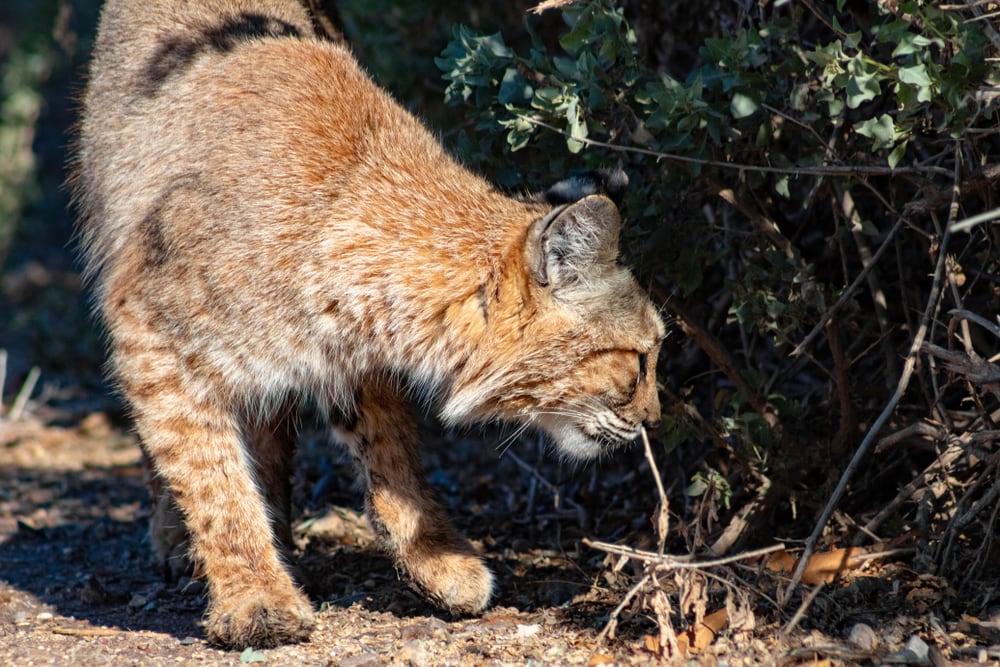
The most specific threat to lynx species is food availability. As climate change, urban sprawl, and human activity continue to impact and cause the decline of prey species, it becomes harder and harder for lynx species to sustain themselves.
Human Activity
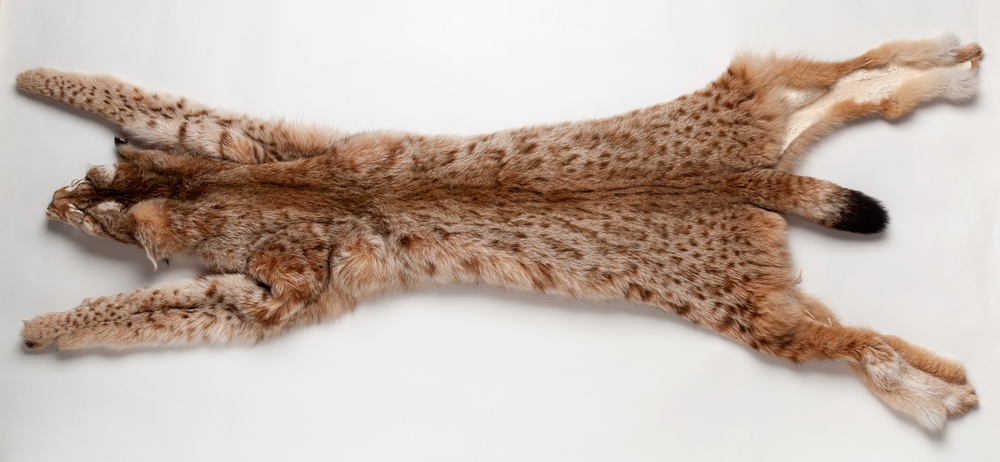
The largest threat to lynx species is human activity, of all kinds. The Canadian lynx and red lynx are both listed by the IUCN as Least Concern. They aren’t considered to be under any threat of extinction in the near future, but some are protected in some regions due to human activity.
Lynx are commonly hunted for their warm pelts. On average, 90,000 pelts are sold each year in fur markets. This likely doesn’t have a major impact on population numbers globally, but can contribute to a localized reduction in wild lynx numbers.
While North American and Eurasian lynx populations are relatively safe, their Iberian cousins aren’t doing as well. The species is considered endangered, with the wild population falling to under 100 individuals as recently as 2002.
Today, there are around 1,000 Iberian lynx in the wild. The animal’s downfall was specifically caused by people, one man in particular.
One doctor in Spain released a disease meant to control rabbit populations that were rooting through his garden. It ended up being so effective, it utterly decimated rabbit populations throughout the region. Without suitable prey species, the lynx nearly died out.
Today, conservationists in the region breed, immunize, and release rabbits for the lynx to hunt.
Habitat Destruction

Localized habitat destruction is one threat to lynx populations. They tend to mark off territory and spend their lives patrolling the area. Logging, trapping, mining, and urban movement contribute to the destruction of native habitats for lynx populations.
You may also like: Learn What is a Bite Force and The Top Animals with The Strongest Bote Force: With Images, Facts, Descriptions, and More!
Lynx vs Bobcat FAQs
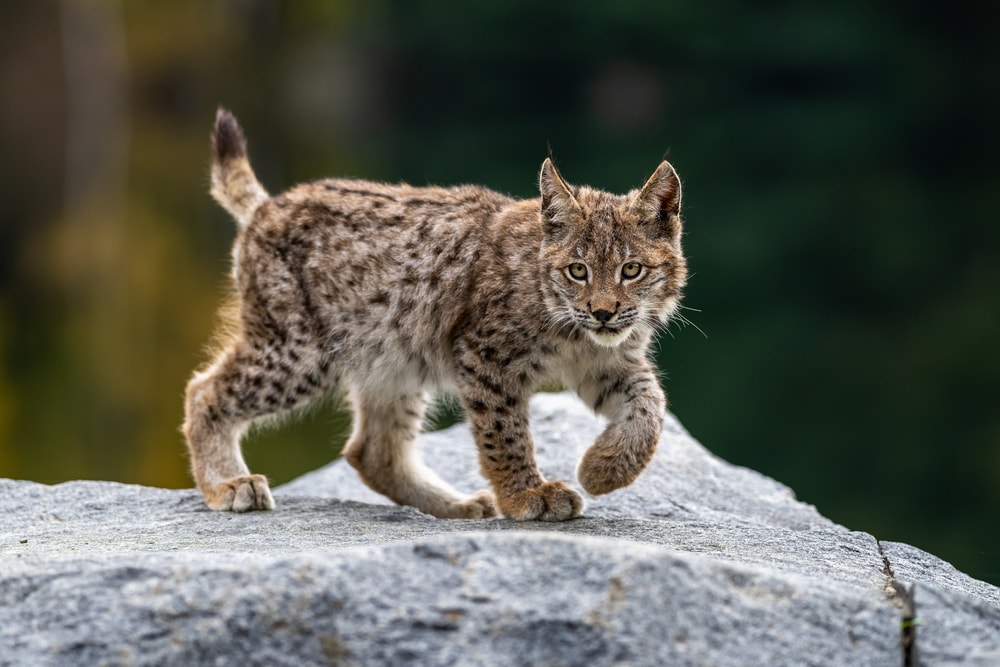
1. Can a bobcat and lynx mate?
They can! Hybrid offspring of lynx and bobcats are called blynx or lynxcats. Unlike other hybrid animal species, it’s common for these animals to be able to have offspring of their own.
The success of their offspring is likely due to how closely lynx and bobcats are related genetically. Being from the same family, genus, and likely trading genetics through time in North America gives them an edge over other hybridized animals.
2. How much bigger is a bobcat than my housecat?
A typical bobcat can weigh between 11 to 37 lbs (5 to 17 kg), while your normal house cat weighs 7.9 – 9.9 lbs (3.5-4.5 kg). They’re also usually much longer than your typical house cat.
Side by side, it would be hard to mistake a bobcat for your pet. Despite their rounded faces and fairly small size, they’re much larger than pet cats and have an attitude that will tell you the difference right away.
3. Are lynx dangerous to humans?
Lynx are rarely dangerous to humans, with most bites or attacks occurring because people thought it was a good idea to pet them. For the most part, they will go out of their way to avoid people and tend to stay far away from urban environments.
Lynx with rabies or desperate individuals pose the most risk to people (outside of provoked instances). These animals will act irrationally and have been known to go after humans as either a last resort food source or because of their disease driving them mad.




